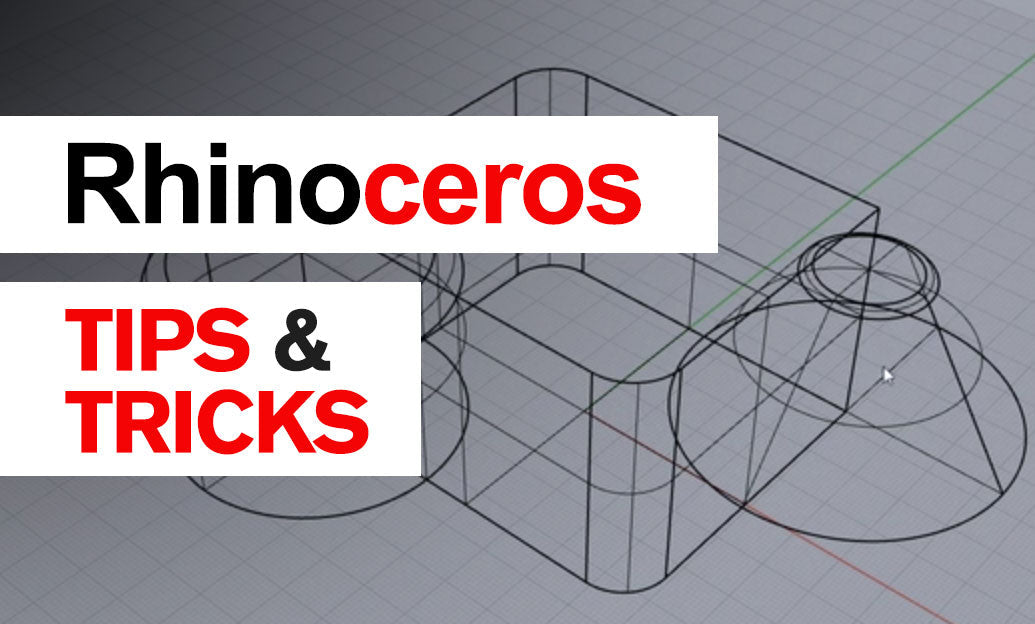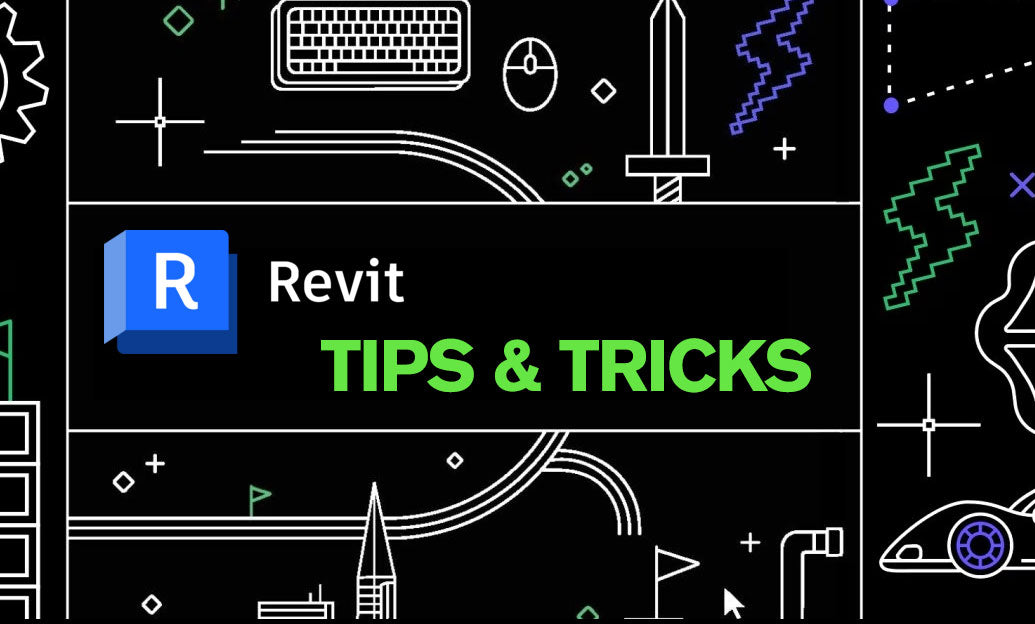Your Cart is Empty
Customer Testimonials
-
"Great customer service. The folks at Novedge were super helpful in navigating a somewhat complicated order including software upgrades and serial numbers in various stages of inactivity. They were friendly and helpful throughout the process.."
Ruben Ruckmark
"Quick & very helpful. We have been using Novedge for years and are very happy with their quick service when we need to make a purchase and excellent support resolving any issues."
Will Woodson
"Scott is the best. He reminds me about subscriptions dates, guides me in the correct direction for updates. He always responds promptly to me. He is literally the reason I continue to work with Novedge and will do so in the future."
Edward Mchugh
"Calvin Lok is “the man”. After my purchase of Sketchup 2021, he called me and provided step-by-step instructions to ease me through difficulties I was having with the setup of my new software."
Mike Borzage
Boolean Operations: Transforming Modern 3D Design Workflows
July 06, 2025 10 min read


Overview and Evolution of Boolean Operations
Boolean operations have been a cornerstone in the evolution of 3D modeling workflows, originating from rudimentary computational methods and progressively maturing into sophisticated techniques used in modern software applications. The historical journey of these operations began with simple geometric algorithms that enabled designers to perform basic combining and subtracting actions on primitive shapes. Over time, as the complexity of computer-aided design (CAD) systems increased, so did the need for more robust and refined Boolean tools capable of handling intricate models. Early implementations were limited by computational power and algorithmic efficiency; however, as hardware capabilities improved and software development embraced advanced computational geometry, Boolean operations evolved into a critical feature for designers across multiple disciplines. This evolution has significantly impacted fields such as architectural design, product visualization, and engineering computation. In today’s world, Boolean operations facilitate the merging and subtracting of complex models to achieve precise design modifications, leading to notable improvements in precision and workflow efficiency. Designers now benefit from the ability to generate geometries that would have been almost impossible to model manually.
Historical Development and Early Implementations
In the early days of digital modeling, Boolean operations were rudimentary and often resulted in models that were computationally heavy and prone to errors, especially when dealing with higher complexity. These early approaches primarily worked with simple shapes, and the operations were limited to union, difference, and intersection functions without the advanced error checking mechanisms available in modern software.- Early CAD systems emphasized basic geometric composition.
- Limited computational power constrained the complexity of models.
- Incremental improvements led to higher precision over time.
Impact Across Design Disciplines
Modern applications of Boolean operations in design extend far beyond simple shape manipulation. They are now an integral part of various industries including CAD, architectural design, and product visualization. With the integration of Boolean operations into design software, professionals can achieve precise control over model complexity and aesthetics. Notably, **advanced Boolean techniques** have become essential for overcoming the challenges of increasingly intricate design demands. Resulting models now exhibit improved mesh integrity and structural realism, attributes that are indispensable in collaborative design environments and high-stakes engineering computations.Critical Role of Advanced Boolean Operations in Modern Design
The integration of advanced Boolean operations within modern design software represents a leap in precision and complexity management which is central to the current breakthroughs in 3D modeling. With the advent of sophisticated algorithms, designers can handle a host of simulation and visualization challenges that were previously considered insurmountable. **Advanced Boolean operations** are indispensable for tasks that require the combination, subtraction, or intersection of multiple complex geometries with unmatched precision. This capability not only enhances the aesthetic and functional aspects of the model but also optimizes the workflow significantly. Today’s design environments in CAD, architecture, and product visualization rely heavily on the robust performance of Boolean operations to manipulate and refine models effectively. This integration helps streamline the design process by offering a more efficient route to creating intricate designs.
Enhancing Model Precision and Complexity
In modern digital fabrication, precision is paramount, and **advanced Boolean operations** significantly contribute to achieving this. By enabling designers to perform intricate subtraction and union operations, these techniques lead to the creation of models that are not only more detailed but also structurally viable. The ability to adjust and integrate complex geometries seamlessly benefits industries that demand high accuracy in their renderings and prototypes.- Higher model detail through granular geometry manipulation.
- Improved mesh quality and reduced errors during fabrication.
- Enhanced capability for creating visually and functionally sophisticated designs.
Impact on Workflow Efficiency and Innovation
Embracing advanced Boolean operations has transformed traditional design workflows, paving the way for increased efficiency and innovation. By reducing the time required for model corrections and iterations, these operations allow designers to focus on innovative design solutions rather than troubleshooting mesh-related issues. The iterative design process is further accelerated, leading to faster turnaround times in product development cycles. Moreover, the significant reduction in errors during the mesh fusion process promotes a more collaborative environment, where multiple stakeholders can participate in refining a design without the typical setbacks caused by computational inaccuracies.Fundamentals of Boolean Operations in 3D Modeling
A deep understanding of Boolean operations is essential for mastering the intricacies of modern 3D modeling. The foundational techniques involve the manipulation of shapes using three primary operations: union, difference, and intersection. The union operation seamlessly merges two or more objects into a single entity. The difference operation removes the volume of one object from another, creating voids based on the intersecting regions, while the intersection operation focuses solely on the overlapping segments of the shapes involved. These basic functions are underpinned by rigorous mathematical principles and computational geometry theories that ensure precision and consistency across various modeling scenarios. These operations are not merely abstract algorithms but have been refined for use in high-powered design software where performance, reliability, and precision are non-negotiable.
Union, Difference, and Intersection Explained
Each of these operations employs specific computational logic and geometric decision-making:- Union: Combines multiple objects to create a single, cohesive model. This is critical when designing components that need to be manufactured as a single, unified entity.
- Difference: Uses one object to subtract from another, allowing for the creation of intricate voids and hollows. This is especially useful in scenarios such as sculpted models and detailed internal structures.
- Intersection: Extracts the volume that two objects share in common, a technique widely used in refining overlapping design elements.
Mathematical Principles and Computational Geometry
Advanced Boolean operations draw heavily on algorithms from computational geometry. These algorithms handle spatial intersections, the processing of mesh data, and the resolution of complex intersections with high reliability. Mathematically, Boolean operations rely on set theory and solid geometry, with underlying principles that maintain the integrity of the topology of 3D models. This rigorous mathematical framework ensures that despite the complexity of operations, the resultant model is accurate and free of anomalies that might result from overlapping geometries or non-manifold conditions.Complex Challenges and Solutions in Boolean Modeling
As beneficial as Boolean operations are in the realm of 3D modeling, they also come with their own set of complex challenges. One of the primary difficulties encountered is managing intricate geometries with high mesh density, which can lead to a multitude of computational errors when performing Boolean operations. A prominent issue is ensuring mesh integrity during the union, difference, or intersection processes, where even minor inaccuracies can lead to non-manifold models or inconsistent geometrical outcomes. These challenges are heightened when models become exceedingly complex, where millions of polygons demand precision beyond conventional computational limits. Hence, modern design software implements specific error detection and correction algorithms that identify and address these discrepancies in real-time. For professionals dealing with expansive and detailed models, optimizing Boolean operations is critical to maintaining workflow efficiency and design innovation.
Handling Complex Geometries and Mesh Integrity
To address the complexities encountered in Boolean modeling, several strategies are deployed:- Designers utilize iterative refinement techniques to maintain mesh integrity during operations.
- Advanced algorithms continuously assess and correct potential errors in non-manifold conditions.
- A robust error-detection mechanism ensures that problematic areas are flagged and resolved before final export.
Dealing with Non-Manifold Models and Precision Issues
Non-manifold geometries represent a significant challenge in Boolean operations. Such geometries can disrupt the proper functioning of algorithms by introducing ambiguous volume definitions and weakly-connected vertices. Precision issues, often stemming from floating-point arithmetic limitations, can further compound these problems. Advanced techniques now incorporate adaptive precision methods where computational accuracy is enhanced by dynamically adjusting parameters based on model complexity. These strategies not only improve the reliability of Boolean operations but also contribute to smoother integration in real-world design workflows, where iterative changes are a regular feature.Software-specific Optimizations in Boolean Tool Implementation
In the competitive landscape of design software, different applications approach Boolean operations with unique optimizations aimed at balancing performance, reliability, and computational efficiency. **Leading design applications** implement Boolean tool functionalities that differ in terms of geometry processing speed and error management. These differences are greatly influenced by the underlying hardware utilization, the algorithmic optimizations employed, and the scale of the models being processed. Designers often have to choose between software packages based on their specific needs, whether for rapid prototyping or high-detail simulations. Understanding the performance trade-offs between these implementations is essential for achieving the desired outcomes in a streamlined workflow. For instance, one software might offer faster computation times but at the expense of handling intricate details, whereas another might provide a more robust handling of complex geometries with a slight delay in processing speed.
Comparison of Boolean Tool Implementations
When comparing Boolean tool implementations across various platforms, several critical factors stand out:- Speed versus precision: Some applications prioritize rapid calculations while others emphasize detailed error checking.
- Reliability and stability: The quality of the algorithms greatly influences how well the software manages unexpected errors, especially with complex designs.
- Hardware utilization: Efficient use of available computing power determines if the solution can scale with large and demanding models.
Performance Trade-offs and Reliability Considerations
Balancing performance with reliability is an ongoing challenge in Boolean tool development. Software engineers continuously refine their algorithms to minimize processing time without sacrificing model integrity. This often involves tuning parameters for various use cases and integrating multi-threaded processing to better exploit modern computing architectures. The ongoing evolution of design software is driving innovation in these areas, with many developers exploring adaptive and predictive algorithms that preemptively resolve issues before they escalate into significant errors. In the end, the choice of software becomes a strategic decision influenced by the designer's need for speed, precision, and the complexity of the design tasks. The convergence of these factors shapes the future trajectory of Boolean operation tools and their applications in high-end design workflows.Integrating Advanced Boolean Operations in Design Workflows
Integrating advanced Boolean operations into design workflows is paramount for achieving both efficiency and high-quality outcomes in contemporary design projects. When seamlessly embedded within a design pipeline, these operations can significantly reduce the time required for model iteration and refinement. The integration process involves not only a clear understanding of the software-specific tools available but also the development of best practices that cater to the unique requirements of each project. Designers are encouraged to combine **advanced Boolean techniques** with other modeling strategies, ensuring that the entire workflow remains streamlined and collaborative. Successful integration means that Boolean operations are used as a facilitative tool to enhance overall design quality, simplify model corrections, and ultimately empower designers to tackle more complex projects with confidence.
Best Practices for Workflow Integration
Several best practices can help ensure that Boolean operations add value rather than complexity:- Plan the modeling process to incorporate Boolean operations at stages where they offer maximum benefit.
- Utilize software features that allow for real-time error checking and mesh correction.
- Maintain a repository of reusable Boolean configurations for common design scenarios.
Incorporating Boolean Operations into Collaborative Design Processes
When multiple team members contribute to a design project, maintaining consistency in Boolean operations is crucial. Standardized protocols can be developed to guide the use of these techniques, from the initial planning stages through to detailed modeling. The collaborative use of Boolean operations can also minimize design revision cycles, as shared protocols reduce the number of errors encountered when merging work from different sources. By fostering a culture of collaboration and continuous improvement, teams can utilize Boolean operations not only to refine individual models but also to create a reliable and adaptable workflow that meets the demands of modern design practices.Future Trends and Innovations in Boolean Processing
As the landscape of design software continues to evolve, emerging trends in Boolean operations are setting the stage for transformative changes in the design process. Driven by the rapid development of artificial intelligence (AI) and automation technologies, the next generation of Boolean processing promises improvements in efficiency and precision that were previously unimaginable. These innovations aim to minimize the manual effort needed for error detection and correction, substituting traditional methods with adaptive algorithms that can forecast potential issues and automatically adjust parameters in real-time. With these advancements, the design process will become more intuitive and responsive to the complex demands of modern projects. Researchers and developers are increasingly focusing on creating systems that not only perform Boolean operations with high fidelity but also seamlessly integrate with other design processes to provide holistic solutions.
Advancements in AI and Automation
The role of AI in evolving Boolean processing is particularly promising. Future Boolean systems are expected to incorporate machine learning algorithms that analyze past modeling data and predict potential issues before they arise. This proactive approach to error management can significantly reduce computational overhead and enhance the overall efficiency of the design process. Key advancements in this area include:- Machine learning algorithms for predictive error correction.
- Adaptive modeling systems that adjust precision settings automatically.
- Integration of automated mesh optimization techniques during Boolean computations.
Predictions for Next-Generation 3D Modeling Tools
Looking ahead, next-generation 3D modeling tools will likely feature enhanced Boolean capabilities that are tightly integrated with advanced simulation and data analytics platforms. These tools will provide designers with real-time feedback on the impact of Boolean operations on the structural and aesthetic qualities of their models. The future promises a seamless integration of Boolean operations with virtual reality (VR) and augmented reality (AR) platforms, enabling designers to visualize and adjust their modifications in an immersive environment. As these tools evolve, the emphasis will shift towards not only achieving higher levels of detail and precision but also ensuring that complex modeling tasks can be completed with minimal human intervention, ultimately driving design innovation to new heights.Conclusion and Final Thoughts
In conclusion, mastering advanced Boolean operations is critical for any professional seeking excellence in the fields of CAD, architectural design, product visualization, and beyond. The evolution of Boolean operations from simple geometric manipulations to sophisticated tools embedded in modern design workflows reflects the continuous pursuit of precision and efficiency. Key challenges such as managing complex geometries, ensuring mesh integrity, and handling non-manifold models have driven the development of robust algorithms and error correction strategies. Embracing these advanced techniques empowers designers to push the boundaries of innovation, producing models that are both aesthetically refined and functionally superior.
Recap of Key Themes
Throughout this discussion, several critical themes have emerged:- The historical evolution of Boolean operations highlights their growing importance in modern design workflows.
- Fundamental operations such as union, difference, and intersection are central to manipulating complex models.
- Complex modeling challenges necessitate advanced error detection, mesh integrity checks, and non-manifold management.
- Software-specific optimizations address performance trade-offs and enhance reliability in demanding projects.
- Future innovations in AI and automation promise to revolutionize Boolean processing, making it more intuitive and efficient.
Final Thoughts on Impact and Future Exploration
The ongoing evolution of Boolean operations demonstrates a profound impact on design innovation and process efficiency. As advanced Boolean techniques become further integrated into design workflows, professionals will benefit from improved precision, reduced error rates, and enhanced collaborative processes. The burgeoning integration of AI, real-time error correction, and immersive visualization tools heralds a new era where designers can explore unprecedented levels of model complexity with confidence. Consequently, continuous learning and adaptation of these emerging technologies are strongly encouraged, ensuring that design practices remain at the forefront of innovation.Also in Design News

Rhino 3D Tip: TransformAgain: Repeat Exact Move/Rotate/Scale Transforms Across Objects
December 26, 2025 2 min read
Read More
Cinema 4D Tip: Connect Objects + Delete for clean, export-ready meshes
December 26, 2025 2 min read
Read More
Revit Tip: Revit Conceptual Mass Workflow: Setup, Parametrics, and Conversion
December 26, 2025 2 min read
Read MoreSubscribe
Sign up to get the latest on sales, new releases and more …


